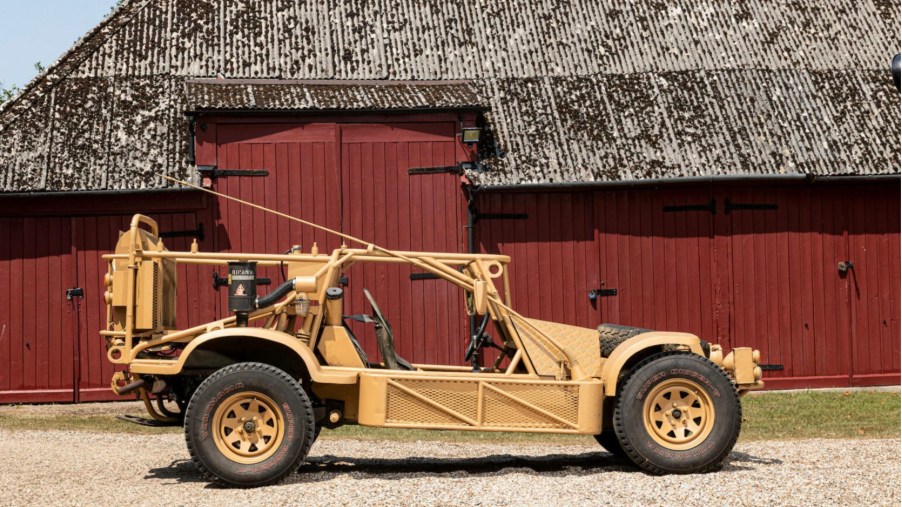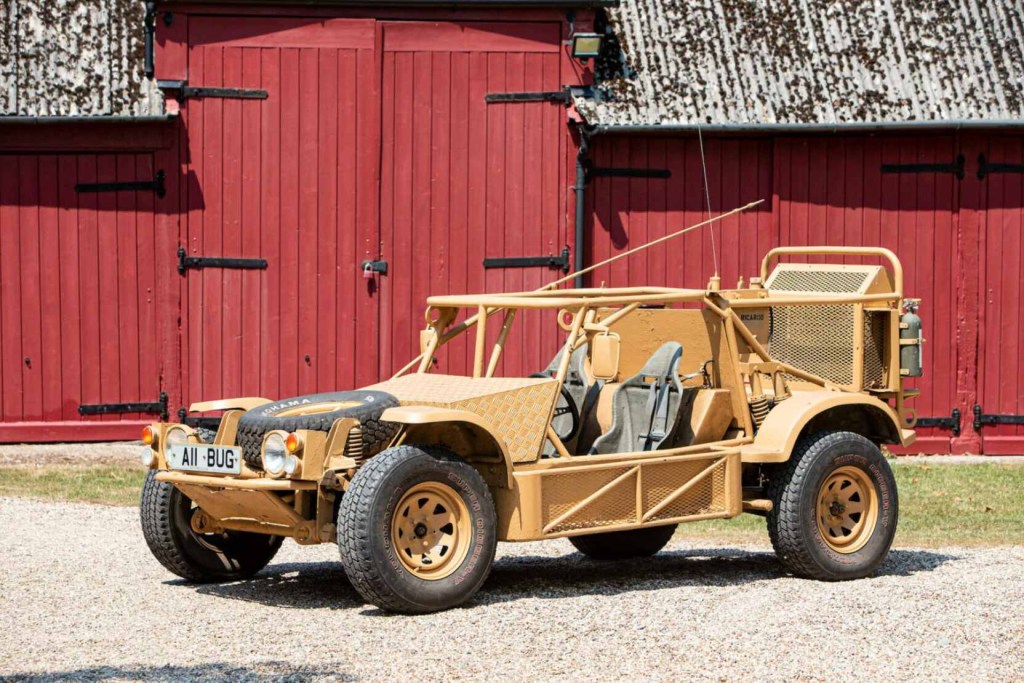
This Road-Legal British Special Forces Dune Buggy Is Cooler Than Whatever You Drive
Dune buggies have a long history of being one of the most go-anywhere, do-anything vehicles around. They aren’t really cars, and they aren’t really trucks, either. Dune buggies fall into a strange middle ground. What you might not have known is that the British Military used dune buggies during Desert Storm. The vehicle is officially known as a Longline/Ricardo MkII Light Strike Vehicle (LSV).
Rare British Military dune buggy

As with most dune buggies, the MkII LSV is powered by a Volkswagen 1.9-liter flat-four engine. This particular engine came out of a Transporter van. Seeing that these buggies were used in Desert Storm, they come equipped with a 4×4 driveline.
While this is a military vehicle, it is not your average army-man runaround. This flat-tan tough buggy was made for one of the British Military’s toughest groups, the Special Air Service, or as they are probably better known the SAS.
Longline Light Strike Vehicle
As Silodrome notes, the Longline Light Strike Vehicle is often also referred to as the Ground Mobile Weapon Platform (GMWP). Military groups sure do love an acronym. Longline developed this platform quickly to deal with the rapid start of the Desert Storm conflict.
While many military vehicles have beaucoup armor, this light buggy obviously has none. The purpose of the LSV was to be light, nimble, and ferocious. Given the terrain of the Middle East, it behooved the troops to have lighter, quicker machines that could traverse the desert without sinking into its shifting sands.
While the LSV is cooler than the other side of the pillow, its rapid development resulted in some issues, mainly with the suspension system. Because of this, along with other issues, not many of these plucky little military buggies were made. For the MkII (the one we see here), it is thought that only six examples were ever made, and only five still exist today. However, there were still three different generations of the Longline.
MkI models were 2×4 with the gas-powered Volkswagen 1.9-L. The MkII had a 4×4 driveline with the same gas-powered engine. The MkIII kept the 4×4 but got a diesel VW engine. All three versions were built around a classic exposed tubular chassis with a roll cage. As with most dune buggies, its VW engine was rear-mounted. The vehicle was commonly used as a weapons platform for a machine gun, grenade launcher, or the Milan anti-tank missile system.
These military dune buggies are road-legal
Once the conflict was resolved, the LSVs came home. The remaining buggies were fitted with headlights, blinkers, taillights, and whatever else they needed to be registered in Britain. They received these modifications so they could be easily used around military bases and the surrounding areas.
Who are the SAS?

The SAS is one of the most elite fighting forces on the planet. It was formed in 1941 by David Stirling, a British officer tasked with creating a highly-trained covert military group. The group was formed specifically to fight German and Italian forces during the war in northern Africa.
Much like American Navy Seals or Green Berets, the SAS specialized in operating behind enemy lines to conduct covert operations, guerilla tactics, reconnaissance, and sabotage. One of the group’s most famous actions was to cripple the German Luftwaffe amid the plague of air raids over Britain. The group snuck into German airbases and destroyed infrastructure and platforms. It’s not difficult to imagine where dune buggies like these fit into SAS operations.
How much does the British SAS vehicle cost?
Given the extreme rarity of the LSV, you aren’t likely to find another anytime soon. If this retired military platform is of interest, this could well be your only shot. The LSV is being offered by Bonhams and is estimated to go between £28,000 – £30,000, which works out to approximately $35,600 – $38,100. If you’d like to read more about it, you can visit the listing here.



